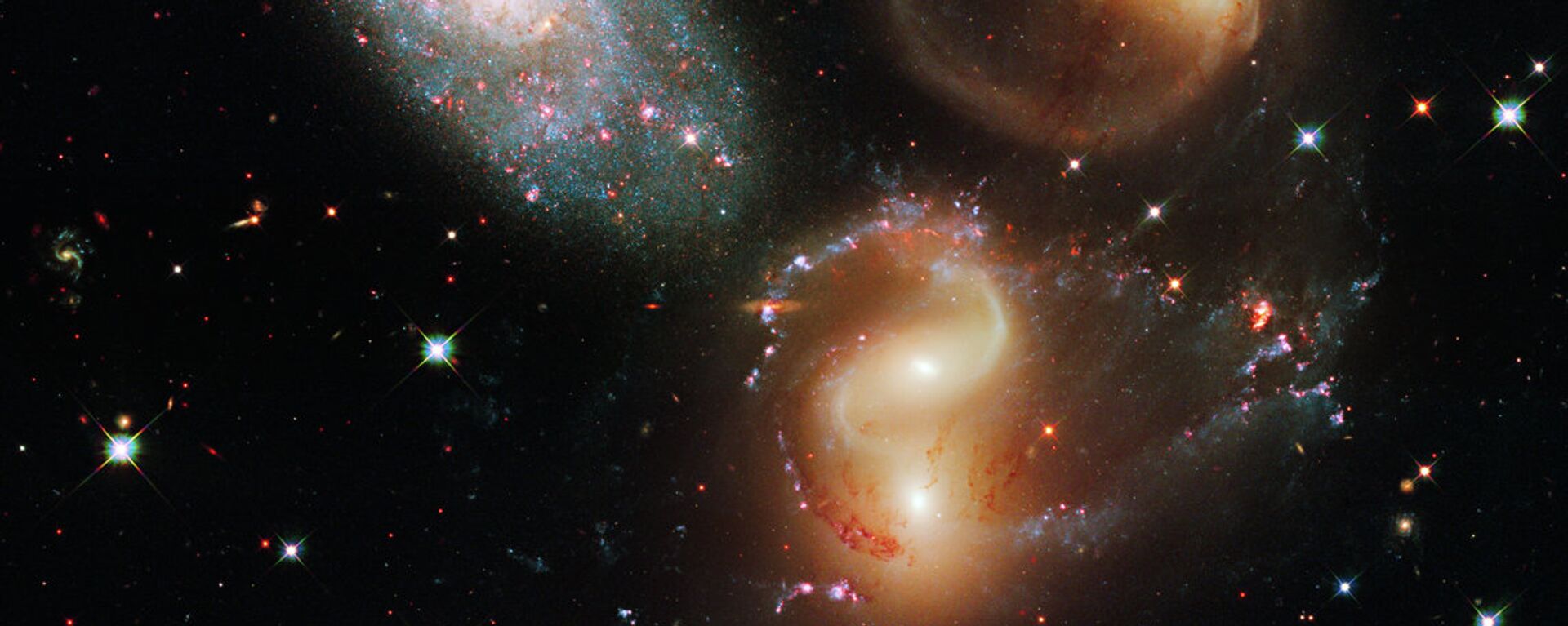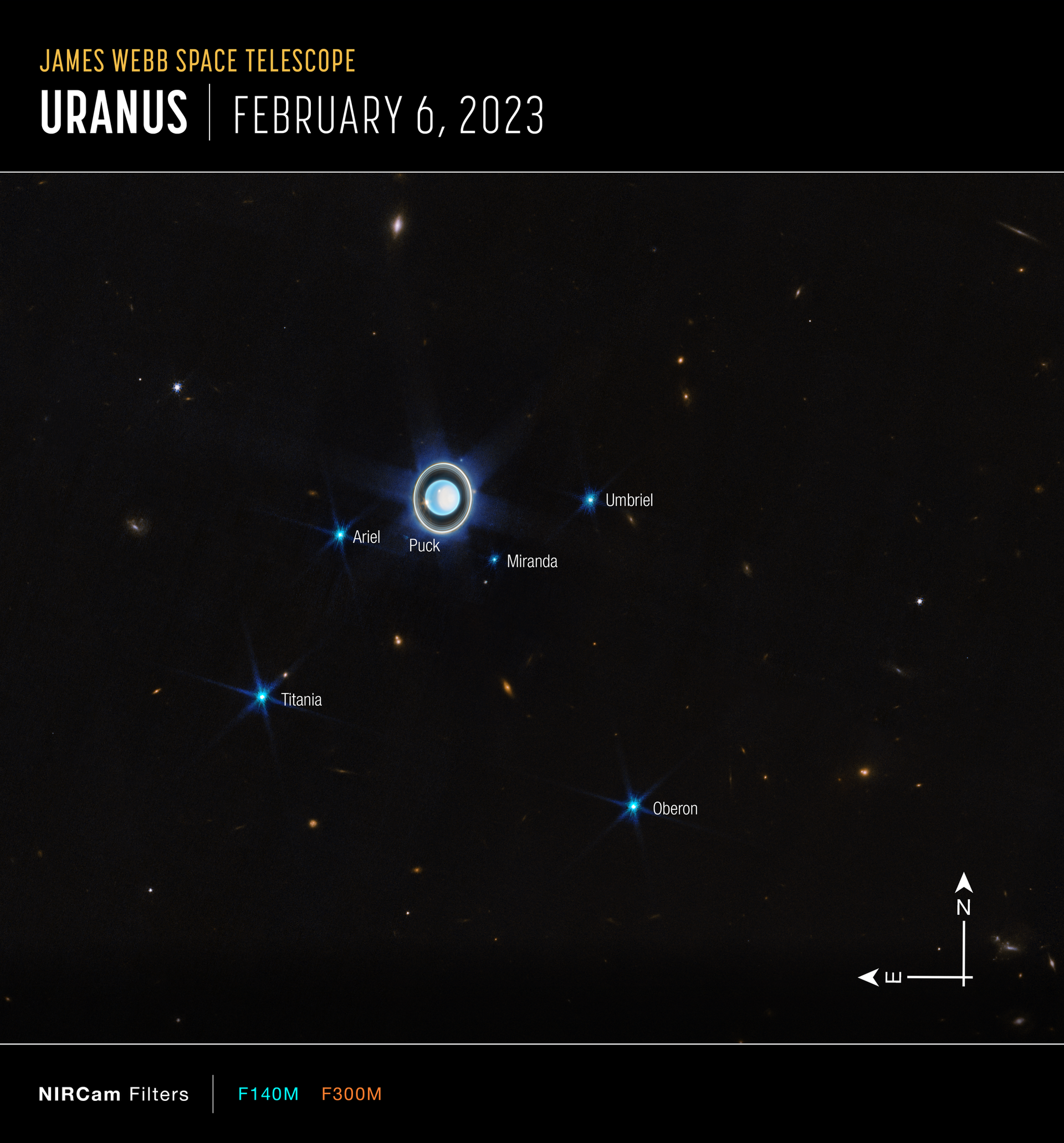https://sputnikglobe.com/20230407/webb-telescope-captures-stunning-upclose-image-of-uranus-rings-1109254207.html
Webb Telescope Captures Stunning, Upclose Image of Uranus' Rings
Webb Telescope Captures Stunning, Upclose Image of Uranus' Rings
Sputnik International
Uranus is the seventh farthest planet in the solar system from the Sun, third in diameter and fourth in mass and new images from the James Webb telescope allow us to better appreciate its beauty.
2023-04-07T20:18+0000
2023-04-07T20:18+0000
2023-04-07T22:39+0000
science & tech
uranus
nasa
james webb space telescope
james webb space telescope (jwst)
image
https://cdn1.img.sputnikglobe.com/img/07e7/04/07/1109254043_0:277:1269:990_1920x0_80_0_0_4af1ea7fe049bccc24bc31b306741d91.png
NASA's James Webb Space Telescope has taken a new detailed picture of Uranus and its satellites, capturing the planet's faint dust rings which have only been photographed twice before.The latest photo was taken by a near-infrared camera (NIRCam) combining two 1.4-micron and 3.0-micron filters (1 micron = 0.0001 centimeter).A dense haze, a polar cap unique to Uranus, is visible at the planet's north pole. In 2028, as the northern summer solstice approaches, this cap may become even brighter and face directly toward Earth, giving astronomers an excellent opportunity to study its north pole and closely examine the rings of Uranus from other angles.Near the edge of the polar haze, a bright spot and several fainter extended spots can be seen. Such clouds are typical of Uranus and are associated with storms passing through the planet.Astronomers know about 13 rings of Uranus, and 11 of them are visible in the new photo, including two faint dust rings that are closer to the planet. Webb also captured many of Uranus' 27 satellites.
https://sputnikglobe.com/20230111/webb-telescope-reveals-clash-of-galaxies-in-detail-1106218136.html
Sputnik International
feedback@sputniknews.com
+74956456601
MIA „Rossiya Segodnya“
2023
News
en_EN
Sputnik International
feedback@sputniknews.com
+74956456601
MIA „Rossiya Segodnya“
Sputnik International
feedback@sputniknews.com
+74956456601
MIA „Rossiya Segodnya“
james webb telescope, uranus new image picture, uranus, nasa discovery, near-infrared camera nircam, uranus rings
james webb telescope, uranus new image picture, uranus, nasa discovery, near-infrared camera nircam, uranus rings
Webb Telescope Captures Stunning, Upclose Image of Uranus' Rings
20:18 GMT 07.04.2023 (Updated: 22:39 GMT 07.04.2023) Uranus is the seventh farthest planet in the solar system from the Sun, and ranks third in diameter and fourth in mass. It was discovered in 1781 by the English astronomer William Herschel and was named after the Greek god of the sky Uranus. New images from the James Webb telescope allow us to better appreciate its beauty.
NASA's James Webb Space Telescope has taken a new detailed picture of Uranus and its satellites, capturing the planet's faint dust rings which have only been photographed twice before.
The latest photo was taken by a near-infrared camera (
NIRCam) combining two 1.4-micron and 3.0-micron filters (1 micron = 0.0001 centimeter).
A dense haze, a polar cap unique to Uranus, is visible at the planet's north pole. In 2028, as the northern summer solstice approaches, this cap may become even brighter and face directly toward Earth, giving astronomers an excellent opportunity to study its north pole and closely examine the rings of Uranus from other angles.
Near the edge of the polar haze, a bright spot and several fainter extended spots can be seen. Such clouds are typical of Uranus and are associated with storms passing through the planet.
"On the right side of the planet there’s an area of brightening at the pole facing the Sun, known as a polar cap. This polar cap is unique to Uranus – it seems to appear when the pole enters direct sunlight in the summer and vanish in the fall; these Webb data will help scientists understand the currently mysterious mechanism. Webb revealed a surprising aspect of the polar cap: a subtle enhanced brightening at the center of the cap," NASA noted in statement.
Astronomers know about 13 rings of Uranus, and 11 of them are visible in the new photo, including two faint dust rings that are closer to the planet. Webb also captured many of Uranus' 27 satellites.

11 January 2023, 10:02 GMT



